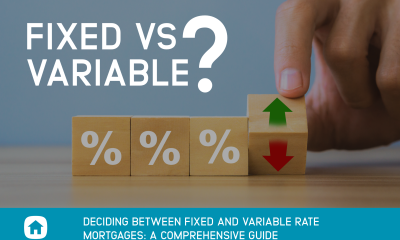Since getting engaged in December 2019, Julia Gifford has had to tighten her belt.
The co-founder of content marketing startup True Six Co. is currently planning her summer 2021 wedding — a tremendous expense that’s forced her to pare back her spending in order to reallocate money to her bridal fund.
Overzealous eating out was one of the first costs she slashed.
To avoid the cost of dining out during the workday, Gifford has started meal prepping.
She plans her lunches by the week and buys the groceries with which to do so in bulk. The startup co-founder splits her time between Canada and Latvia, and every time she travels to her home in Riga, she packs at least one big bag of quinoa from Costco into her carry-on. Each bag is around $12 each and lasts her around six months, she estimates.
“Any of the store bought stuff or whatever is available on the streets is either expensive or flavourless or both,” Gifford says of eating lunch out. “It’s just so much more affordable to do your own cooking at home, and even more so when you think a little bit ahead about it.”
Gifford is one of many Canadians who’s found meal-prepping to be a solution to the ever-present cost of eating. By buying ingredients in bulk, she’s able to save on staples. And by preparing her meals in advance, Gifford ensures she’s never caught lunch-less on busy days, forced to spend anywhere from $5 to $15 more than a packed lunch would’ve cost to prepare.
Gifford’s go-to lunch includes low-cost staples: She typically starts with a grain, like quinoa, and tops it with a source of protein, a heaping of grilled vegetables and a side of fresh leafy greens. She tries to stick with what’s seasonal, knowing that in-season produce is often the most affordable.
Matt Stickland, a freelance journalist and former NDP MP candidate in Nova Scotia, works mostly from home — but finds meal-prepping to be an affordable way to stay organized and save time on cooking for his family of three.
Noting that it can be easy to get stuck in the rut of cooking the same meals over and over again, Stickland uses a meal-prepping app called Platejoy, which creates meal plans that account for his family’s dietary goals and restrictions and writes a grocery list based on the meals it selects for its user.
Platejoy costs around $90 annually, but for Stickland, the convenience and the array of new recipes it provides is worth the cost.
“For me, [meal-prepping] got to a certain point where I was just making the same eight things. And I just was getting really uninspired and I was bored with it,” he says. “Now, a lot of the thought processes of meal prep are automated, I can think about the more fun aspects of meal planning.”
Stickland estimates that he spends just $80 per week on groceries for his family of three by shopping in bulk and frequenting discount franchises or independent grocers around Halifax. He and his wife have also invested in a deep freeze — a hefty up front cost that has allowed them to save over the long-term by purchasing meat and other freezables in bulk at discounted rates.
Stickland acknowledges that the time and labour he puts into grocery shopping allow him to bargain hunt in ways that he might not otherwise be able to if pressed for time.
In this sense, finding the most affordable meal plan for you often requires trade-offs. It’s important to consider factors like time, distance, and convenience when crafting a budget friendly grocery plan — otherwise it’ll be difficult to stick to.
“[Meal plans will work] for some people, and it won’t work for others and that’s fine,” Stickland says. “Whatever you’re doing to make it is fine.”
This report by The Canadian Press was first published Feb. 11, 2020.
Audrey Carleton, The Canadian Press

 Buying a Home5 years ago
Buying a Home5 years ago
 Credit6 years ago
Credit6 years ago
 Business4 years ago
Business4 years ago
 5 Mortgage Secrets7 years ago
5 Mortgage Secrets7 years ago
 Buying a Home6 years ago
Buying a Home6 years ago
 5 Mortgage Secrets6 years ago
5 Mortgage Secrets6 years ago
 News12 months ago
News12 months ago
 Business4 years ago
Business4 years ago




